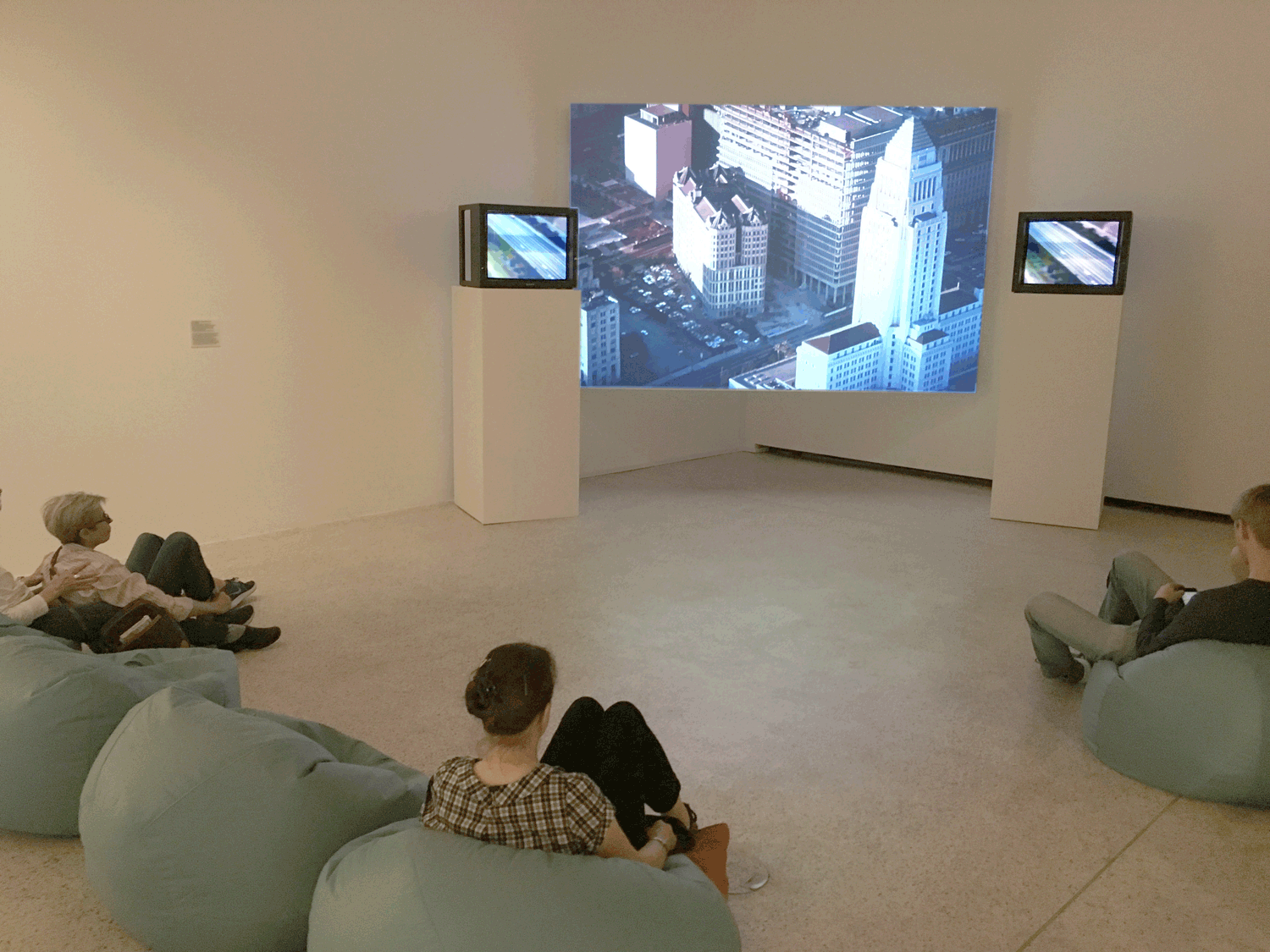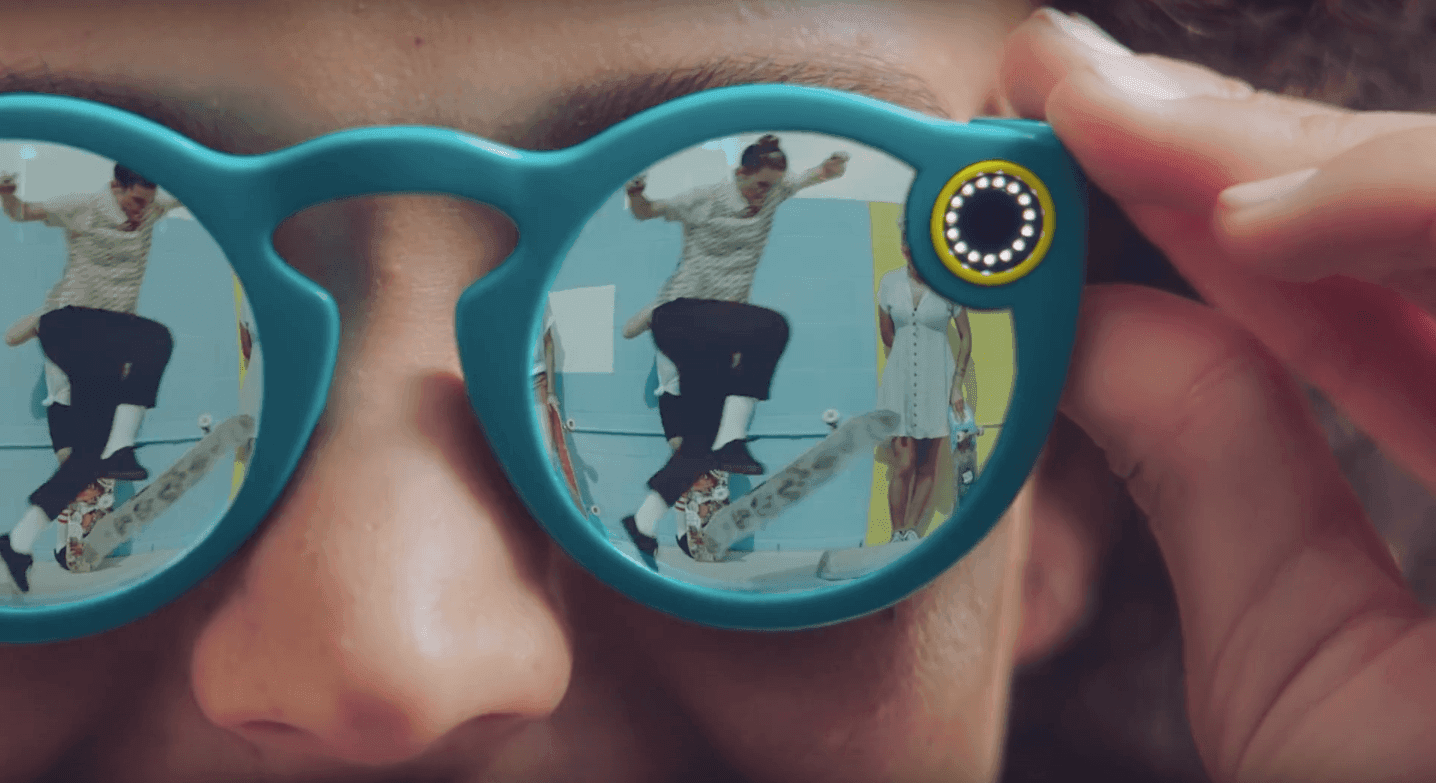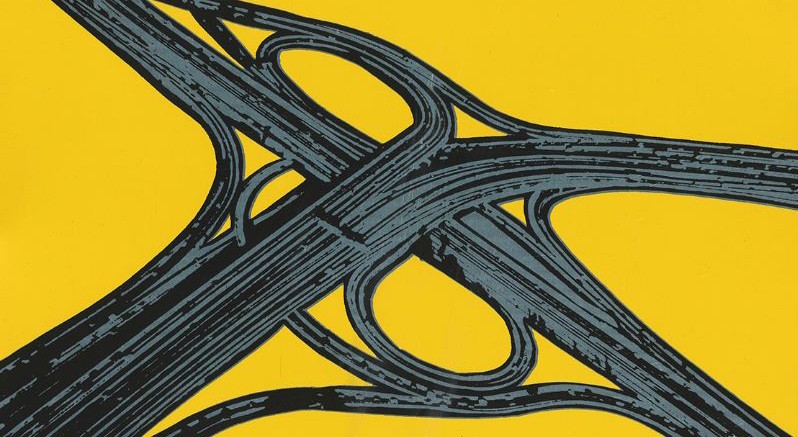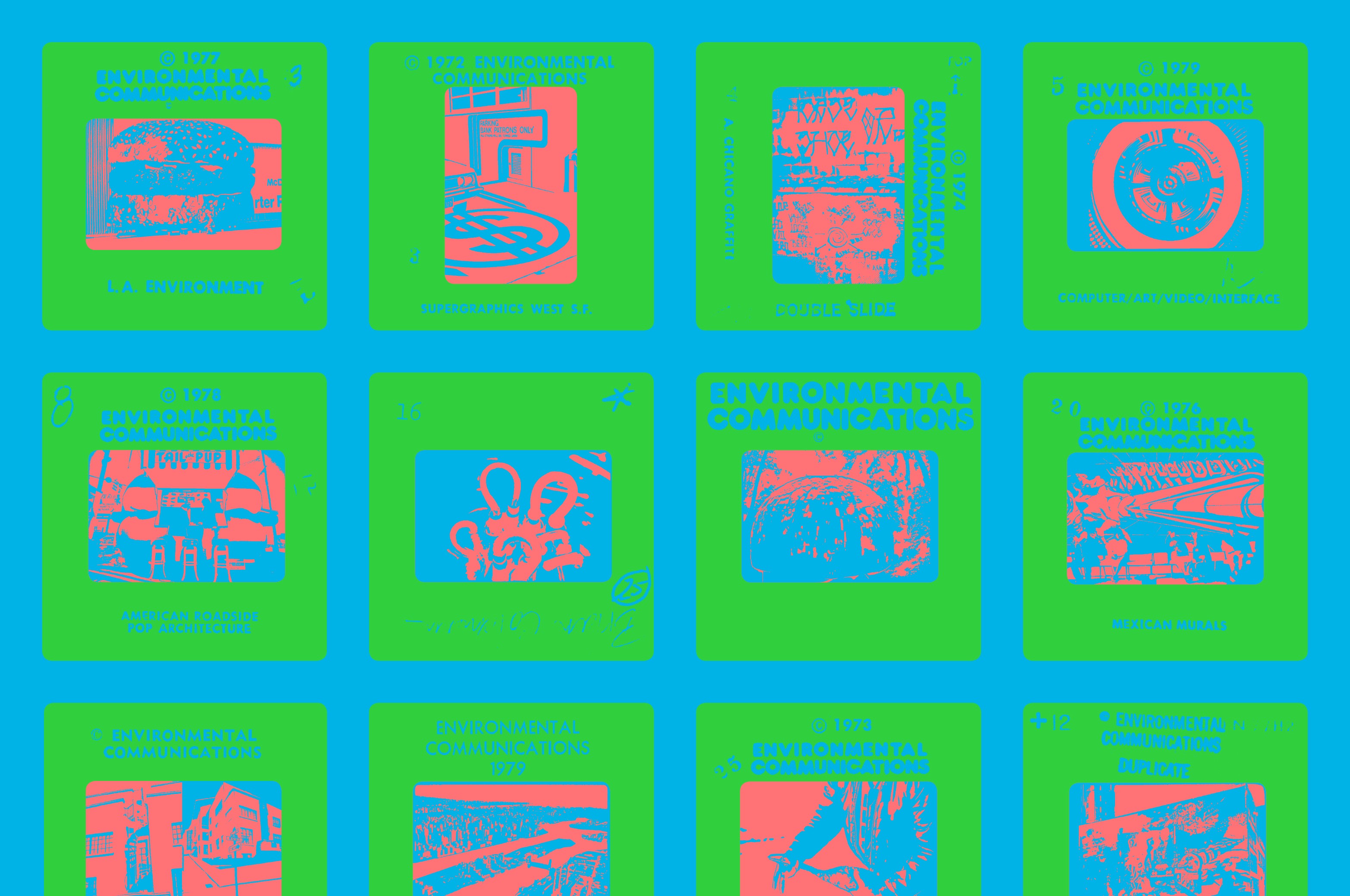Current Exhibition:Environmental Communications: Seeing Los Angeles in the 1970s
Sprawling and reliant on the car, Los Angeles was never considered an ideal city. But in the early 1970s it started to be appreciated as a city of signs and pop-up buildings – a city to be consumed from behind the wheel of a car. In 1969, a group called Environmental Communications started to document the unique culture of Los Angeles in the name of architectural education.
This free display in the museum’s atrium explores how a collective of architects and photographers started to document the unique changing culture of Los Angeles in the 1970s in the name of architectural education.
Upcoming Exhibition:California
November 10, 2017–March 4, 2018DesignmuseoKorkeavuorenkatu 23,00130 HelsinkiMore Info here
“Designed in California” is the new “Made in Italy”. While California’s mid-century modernism is well documented, this is the first exhibition to examine its current global reach. Picking up the story in the 1960s, the exhibition charts the journey from the counterculture to Silicon Valley’s tech culture.A touring exhibition from the Design Museum, London.
California has become a global centre of design. While its mid-century modernism is well documented, this is the first exhibition to examine California’s more recent influence on design. Picking up the story in the 1960s, the exhibition charts the journey from the counterculture to Silicon Valley’s tech culture. Its central idea is that California has pioneered tools of personal liberation, from LSD to skateboards and iPhones. This ambitious survey brings together political posters, personal computers and autonomous cars but also looks beyond hardware to explore how user interface designers in the Bay Area are shaping some of our most common daily experiences. Not only is “Designed in California” the new “Made in Italy”, there is a case to be made that we are all now in some way Californians.
The exhibition will be accompanied by a catalogue, published by Phaidon in May 2017, featuring essays by leading experts and interviews with key figures in Californian design.
INTRODUCTION: California mode
‘California’, the book and the exhibition, will assert that Californian design’s distinguishing feature is its emphasis on personal liberation. From hippy communes to digital networks, from fonts to iPhones and autonomous cars, California’s designers have developed a world-changing repertoire of tools for empowering the individual. This opening essay will examine how California Modern was superseded by California Mode, a state of hyper-connectivity that makes almost anyone an involuntary citizen of California. It will also introduce the exhibition’s underlying paradox – that tools of personal liberation can, by their very success, become tools of control.
GO WHERE YOU WANT: Tools of movement and escape
So many of the innovations associated with California, from LA’s freeways to Google Maps, revolve around freedom of movement. Even the early web browsers, such as Netscape Navigator, were seen as tools for finding our way through cyberspace. This section focuses on tools of mobility, from navigation to portability and exploration. It looks at the touchscreen interface that made the iPhone a pocket revolution; tools that have transformed the way we travel, such as Airbnb; and the autonomous car. Ever in search of the next frontier, California institutions such as SpaceX and the Jet Propulsion Lab now have Mars in their sights.
SEE WHAT YOU WANT: Tools of perception and fantasy
California is best known as the land of make-believe, the home of Disney, Hollywood and videogaming. This section explores how California has pioneered new ways of looking at the world, from psychedelia to virtual reality. It includes design concepts for the influential films ‘Blade Runner’ and ‘Minority Report’, as well as early attempts at new media, from the slideshow performances of the Environmental Communications group in the 1970s to the fully virtual world of Oculus Rift today.
SAY WHAT YOU WANT: Tools of self-expression and rebellion
California has its own history of enabling freedom of expression, from new graphic languages to social media. This section explores the state’s graphic culture through posters magazines and events such as the LA Olympics. Some of this material, including Black Panther posters, is overtly political; some expresses a lifestyle, reflecting the subcultures of skating and surfing, such as ‘Thrasher’ and ‘Raygun’ magazines. Meanwhile, today we are in the age of global communication ‘platforms’ such as Twitter.
MAKE WHAT YOU WANT: Tools of production and self-reliance
This section explores tools that have made ‘making’ easier or lowered the barrier to entry. They range from the Whole Earth Catalog, that bible of self-sufficiency, to the Fab Labs that have helped drive post-industrial Maker culture. The quintessential example is the Apple Mac, which helped make computers personal, and revolutionized graphic design in the process. This section emphasizes the explosion of creative freedom made possible by digital tools.
JOIN WHO YOU WANT: Tools of collaboration and community
Building communities lies at the heart of California design. It was true of the hippy communes in search of an alternative society, and it is true of Silicon Valley start-ups in search of global market share. This section examines the ways and tools of famous California communities, from geodesic domes to the Homebrew Computer Club to Facebook. It includes ephemeral structures for the Burning Man festival and the Xanadu-like visions of the tech campuses.
Panel Discussion:Autopia: Seeing Los Angeles in the 1970s
Saturday, May 27, 12–2pmThe Design MuseumLondonBuy Tickets
In the 1970s Los Angeles starts to be appreciated for its unique urban qualities. This talk offers two perspectives; the arts collective Environmental Communications and British architecture critic Reyner Banham.
What to expect
In the 1970s Los Angeles starts to be appreciated for its unique urban qualities.
For the British architecture critic Reyner Banham, Los Angeles was the prototype of post-modernity. In 1971 he redefined our vision of the city in his seminal text ‘Los Angeles: The Architecture of Four Ecologies’ by highlighting its largely overlooked architectural and urban qualities - including the freeway described by Banham as ‘one of the greater works of man'.
Environmental Communications shared this admiration for Los Angeles’ built environment. The collective was founded in L.A. in 1969 by a group of photographers, architects, designers and psychologists. Their work celebrated the vernacular architecture of Los Angeles through playful images of unique man-made structures – the freeway, customised cars, billboards and service stations – and the integrated environment around them.
This talk brings together the founding members of Environmental Communications to explore perspectives of Los Angeles in the 1970s.
Event concludes with a screening of ‘Reyner Banham Loves Los Angeles’ (1972).
The exhibition will be accompanied by a catalogue, published by Phaidon in May 2017, featuring essays by leading experts and interviews with key figures in Californian design.
David Greenberg
David Greenberg is Co-Founder of Environmental Communications. He has worked collaboratively on cultural projects with Paolo Soleri, Reyner Banham and Buckminster Fuller. His books include; ‘Treehouses in Paradise, Fantasy Designs for the 21st Century’ (2006) and ‘Visionary Bamboo Designs for Ecological Living’ (2007). Currently he is working on sustainable redevelopment projects in Hawaii and China.
Gary Greenberg
Gary Greenberg is a founding member of Environmental Communications. In 1976, he moved to London for a PhD in developmental Biology at UCL. As a scientist, author, photographer and inventor of 3D microscopes, his work combines tools of art and science to explore the designs of Nature. His upcoming book, ‘Florotica’ explores the sensual architecture of the microscopic world of flowers.
Environmental Communications: Contact High
LAXARTFebruary 18–April 1, 2017Curated and designed by Mark Wasiuta, Marcos Sánchez and Adam BandlerCuratorial Assistant: Florencia Alvarez Pacheco
Environmental Communications: Contact High is the first major presentation of the prolific West Coast media collective, Environmental Communications.
Formed by a group of young architects, photographers, and psychologists in the late 1960s, Environmental Communications argued that in an era of accelerating image proliferation, university slide libraries were the emerging centers of institutional and pedagogical power. The group’s core members, David Greenberg, Bernard Perloff, Ted Tokio Tanaka and Roger Mona Webster, speculated that by infiltrating slide libraries with their “environmental photography” they could alter the visual cortex of architecture schools, subvert conventional pedagogy, and spark a revolution in student consciousness.
With debts to LA’s electronically mediated counterculture and its conceptual photography movement their practice was attuned to the spatial, mediatic, and social forces they documented in Tokyo, the American Southwest, and, most often, Los Angeles, their primary object of analysis. They eventually shot hundreds of thousands of 35mm slides, forming a vast visual taxonomy of Southern California’s urban and social geography. Assembled into thematic sets their slides were packaged and sold via the Environmental Communications Catalog to museums, cultural institutions and to an international network of architecture schools. Their slide series mapped the domes, inflatables, communes, and media experiments of the late 1960s and 1970s, compiling an almanac of the era’s alternative architectural practices.
Environmental Communications: Contact High surveys the group’s process images, videotaped road trips, blimp tours and group therapy sessions as well as their sales catalogs, slide sets, and their extensive distribution network.
The exhibition was first produced by GSAPP Exhibitions for the Arthur Ross Architecture Gallery at Columbia University’s Graduate School of Architecture Planning and Preservation.
This expanded version of the exhibition appears with the assistance of the University of Southern California School of Architecture.
Generous support for research on Environmental Communications was provided by the Graham Foundation.
Current Exhibits
Environmental Communications: Seeing Los Angeles in the 1970s at The Design Museum in LondonCloses October 17, 2017. More info here.
Upcoming Exhibits
California at Designmuseo in HelsinkiNovember 10, 2017–March 4, 2018. More info here.
Past Exhibits
California at The Design Museum in LondonCloses October 17, 2017. More info here.
Panel DiscussionAutopia: Seeing Los Angeles in the 1970s at The Design Museum in LondonMay 27, 2017, 2–12pm. More info here.Environmental Communications: Contact Highat LAXART through April 1, 2017. More info here.Discussion:Environmental Communications: a talk, a listenThursday, March 16, 2017 at LAXART.
Environmental Communications: Contact HighOctober 3, 2015–January 3, 2016Chicago Architecture Biennial, Chicago Cultural CenterEnvironmental Communications: Contact HighOctober 6–November 26, 2014Arthur Ross Architecture Gallery, Buell HallProduced by GSAPP Exhibitions, Columbia University



